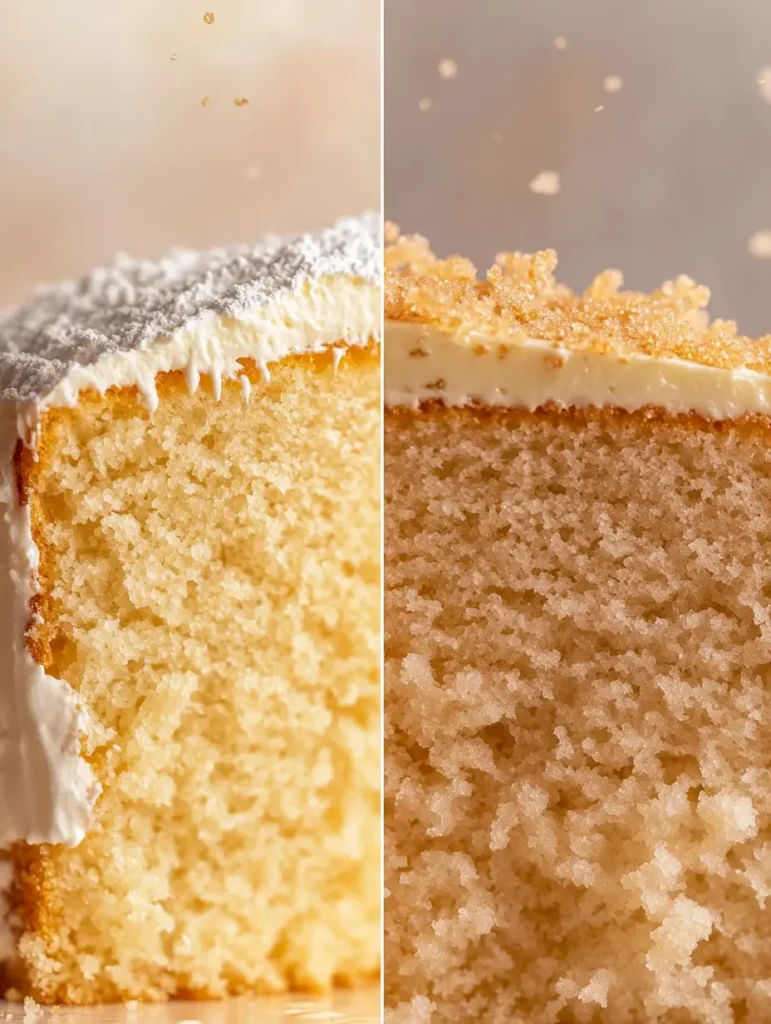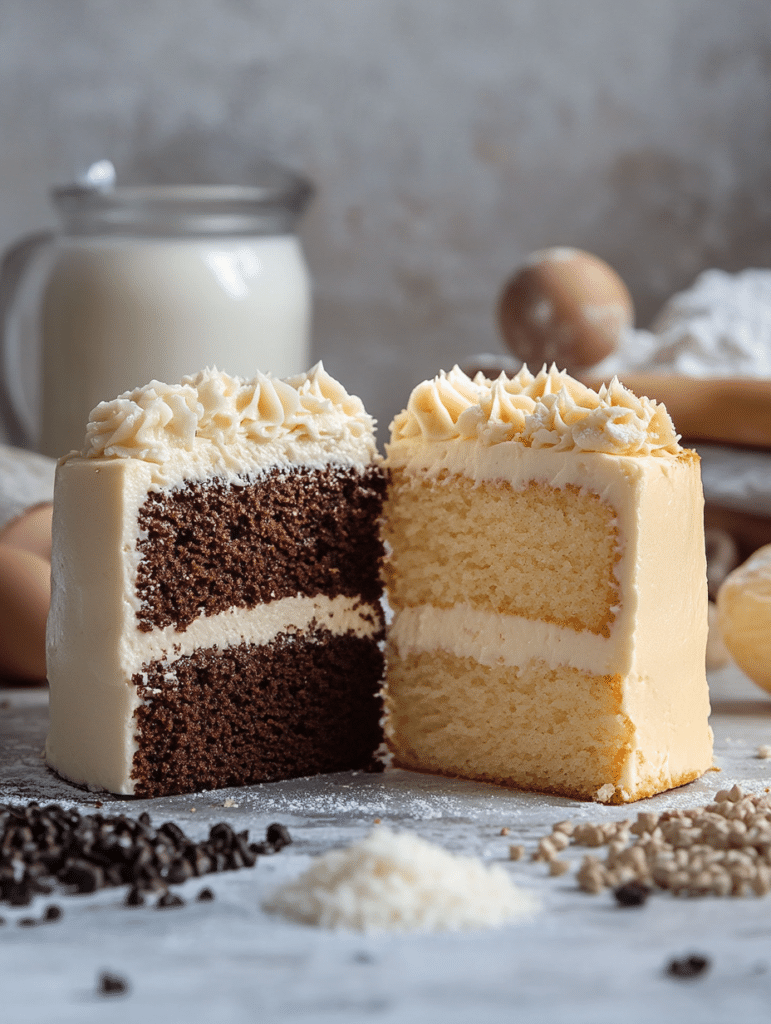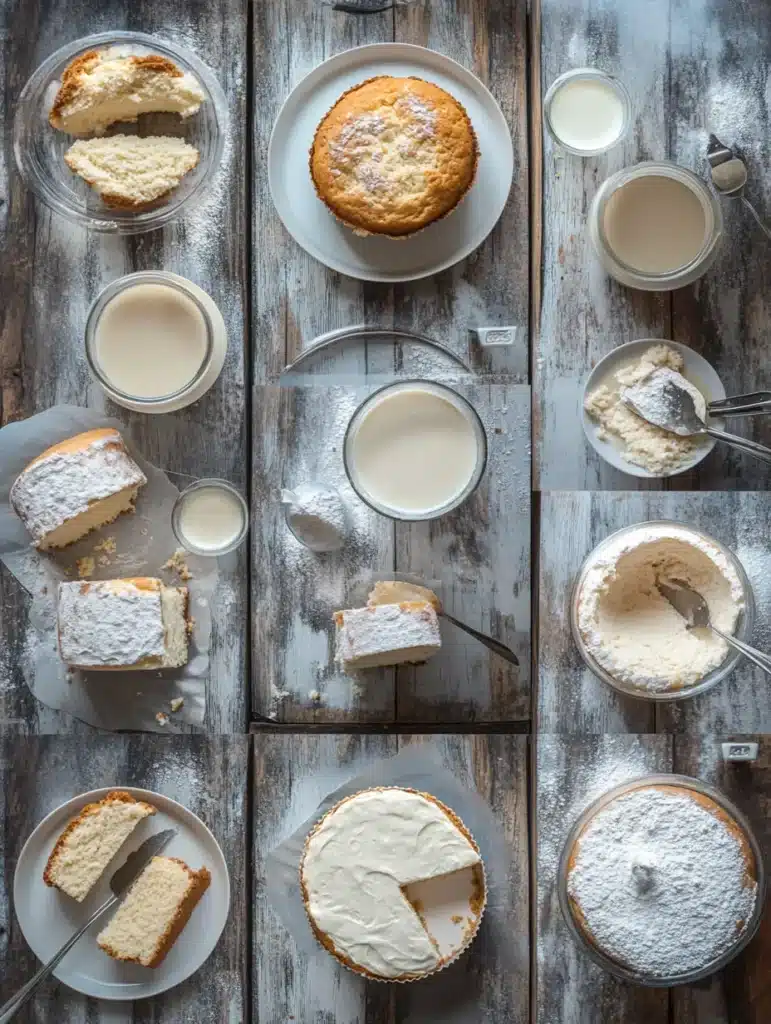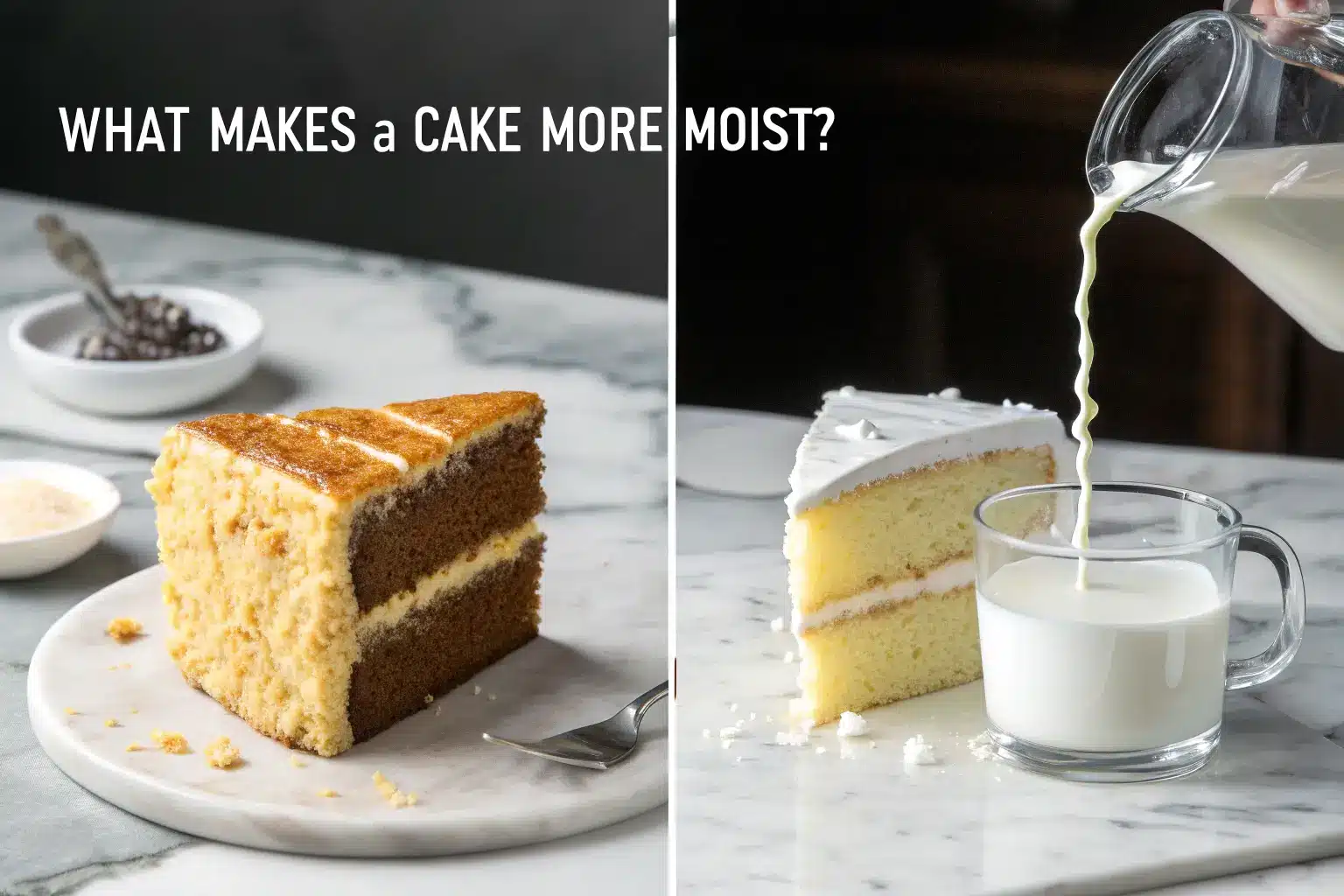Introduction
When it comes to baking the perfect cake, moisture is everything. A dry, crumbly cake can ruin even the most beautiful decoration or most sophisticated flavor combination. Among the many ingredients that contribute to a cake’s moisture, the liquid component plays a crucial role. The age-old debate between using milk or water in cake recipes has left many home bakers wondering: what makes a cake more moist, milk or water?
In this comprehensive guide, we’ll explore the science behind cake moisture, compare milk and water as cake ingredients, and provide practical tips to ensure your cakes turn out deliciously moist every time.

The Science of Cake Moisture
Before diving into the milk versus water debate, it’s important to understand what makes a cake moist in the first place.
Moisture in cakes comes from several sources:
- Liquid ingredients (water, milk, buttermilk, etc.)
- Fats (butter, oil, egg yolks)
- Sugar (which attracts and holds moisture)
- Proper baking techniques (not overbaking)
When a cake batter bakes, several processes happen simultaneously. Proteins coagulate, starches gelatinize, and leavening agents create air pockets. The liquid component is essential for these chemical reactions and significantly influences the final texture.
Milk vs. Water: How Each Affects Cake Moisture
Water in Cake Recipes
Water is the simplest liquid you can add to cake batter. Here’s how it affects your cake:
Pros of Using Water:
- Creates a lighter texture with a more open crumb
- Allows flavors from other ingredients to shine through more clearly
- Results in a somewhat springy texture
- Often produces a cake that feels moister immediately after baking
- Works well in chocolate cakes where cocoa powder needs hydration
Cons of Using Water:
- Lacks fat and protein that contribute to richness
- May produce a less tender crumb
- Can result in faster staling over time compared to milk-based cakes
Milk in Cake Recipes
Milk is more complex than water, containing proteins, fat, sugar, and minerals. These components affect cake moisture and texture in several ways:
Pros of Using Milk:
- Adds fat content that creates tenderness and richness
- Contains proteins that contribute to structure and browning
- Includes milk sugar (lactose) that adds subtle sweetness
- Generally produces cakes that stay moist longer
- Creates a finer, more velvety crumb texture
Cons of Using Milk:
- May produce a slightly denser cake
- Can mute certain delicate flavors
- May create a slightly less “springy” texture than water
When to Choose Milk or Water for Maximum Moisture
The choice between milk and water often depends on the specific type of cake you’re baking:
Best Uses for Water in Cakes
- Chocolate cakes: Water activates cocoa powder better than milk and often produces a more intense chocolate flavor.
- Light, airy cakes: When you want a lighter texture with less richness.
- Vegan cakes: Obviously, water is dairy-free.
- Sponge cakes: Traditional génoise and chiffon cakes often use water.
Best Uses for Milk in Cakes
- Vanilla cakes: Milk enhances the buttery, vanilla flavors.
- Pound cakes: The richness of milk complements the dense nature.
- White cakes: Milk adds tenderness without darkening the color.
- Cakes that need to stay fresh longer: The fat in milk helps retain moisture over time.
Beyond Basic: Other Liquid Options for Ultra-Moist Cakes
While the milk vs. water question is common, other liquid ingredients can contribute to moisture as well:
- Buttermilk: The acidity tenderizes gluten for an ultra-moist crumb.
- Sour cream or yogurt: Higher fat content and acidity create tenderness and moisture.
- Fruit juices: Add flavor and moisture (apple juice works particularly well).
- Coffee: For chocolate cakes, coffee enhances flavor while providing moisture.
- Milk alternatives: Coconut milk, almond milk, or oat milk each brings unique properties.

Expert Tips for Maximizing Cake Moisture (Regardless of Liquid Choice)
Whether you choose milk or water, these techniques will help ensure maximum moisture:
- Don’t overmix the batter: Overmixing develops gluten, resulting in a tougher, drier cake.
- Add fat: Oil-based cakes often stay moister than butter-based cakes.
- Use brown sugar: It contains more moisture than white sugar.
- Add moisture-retaining ingredients: Honey, corn syrup, or applesauce help cakes stay moist longer.
- Don’t overbake: Even one extra minute can dry out your cake.
- Use a simple syrup soak: Brush warm cake layers with simple syrup to add moisture.
- Store properly: Airtight containers prevent moisture loss.
Recipe: The Ultimate Moisture Test Cake (Two Versions)
Try this experiment yourself! Here’s a simple yellow cake recipe with two variations – one using milk and one using water.
Basic Yellow Cake Batter
- 2 cups all-purpose flour
- 1½ cups granulated sugar
- 3 teaspoons baking powder
- ½ teaspoon salt
- ½ cup unsalted butter, softened
- 2 large eggs
- 1 teaspoon vanilla extract
- 1 cup liquid (milk OR water)
Instructions
- Preheat oven to 350°F (175°C). Grease and flour two 8-inch round cake pans.
- In a large bowl, whisk together flour, sugar, baking powder, and salt.
- Add butter, eggs, and vanilla. Beat on medium speed for 2 minutes.
- Add your chosen liquid (milk OR water) and beat for another minute until smooth.
- Pour into prepared pans and bake for 25-30 minutes or until a toothpick inserted in center comes out clean.
- Cool in pans for 10 minutes before transferring to a wire rack.
Try both versions and note the differences in texture, flavor, and moisture retention over a few days!

Conclusion: So What DOES Make a Cake More Moist – Milk or Water?
The answer to “what makes a cake more moist, milk or water?” isn’t straightforward because it depends on how you define “moist.”
If your definition of moist is immediate springiness and lighter texture, water often produces the more immediately moist-seeming cake.
If your definition includes richness, tenderness, and longer-lasting freshness, milk typically creates the more satisfying moist cake experience.
For most home bakers, milk provides the better overall moisture profile thanks to its fat content and protein structure. However, certain recipes (especially chocolate cakes) genuinely benefit from water’s properties.
The best approach? Consider the specific cake type, desired texture, and how long you need the cake to maintain its moisture before deciding which liquid to use in your recipe.
What’s your experience with cake moisture? Have you noticed differences when using milk versus water in your baking? We’d love to hear your thoughts in the comments below!
FAQ: Cake Moisture Questions Answered
What is the secret to a moist cake?
The secret to a moist cake lies in using the right balance of fats, liquids, and sugars by incorporating ingredients like buttermilk, sour cream, yogurt, or oil to help retain moisture while ensuring proper mixing techniques, avoiding overbaking, and baking at the correct temperature. Using milk instead of water also enhances moisture due to its fat and protein content, which contributes to a softer and richer texture.
How do you increase the moistness of a cake?
To increase a cake’s moistness, replace water with milk for extra richness, add an extra egg to improve structure, incorporate oil or melted butter instead of margarine, brush the baked cake with simple syrup to lock in moisture, avoid overmixing the batter to prevent dryness, and ensure the cake is not overbaked by checking for doneness with a toothpick before the suggested baking time ends.
What makes a cake mix more moist?
If you’re using a boxed cake mix and want it to be extra moist, replace water with milk for a richer texture, use melted butter instead of oil for better flavor, add an extra egg for tenderness, mix in a spoonful of sour cream or yogurt to enhance moisture, and bake at a lower temperature for longer to prevent excessive drying while maintaining a soft and moist crumb.
What happens if I use milk instead of water in a cake?
Using milk instead of water in a cake adds more fat, protein, and natural sugars, resulting in a richer and creamier texture, a softer and more tender crumb, and better flavor while making the cake less likely to dry out compared to water-based recipes, leading to a more flavorful and moist final result.

